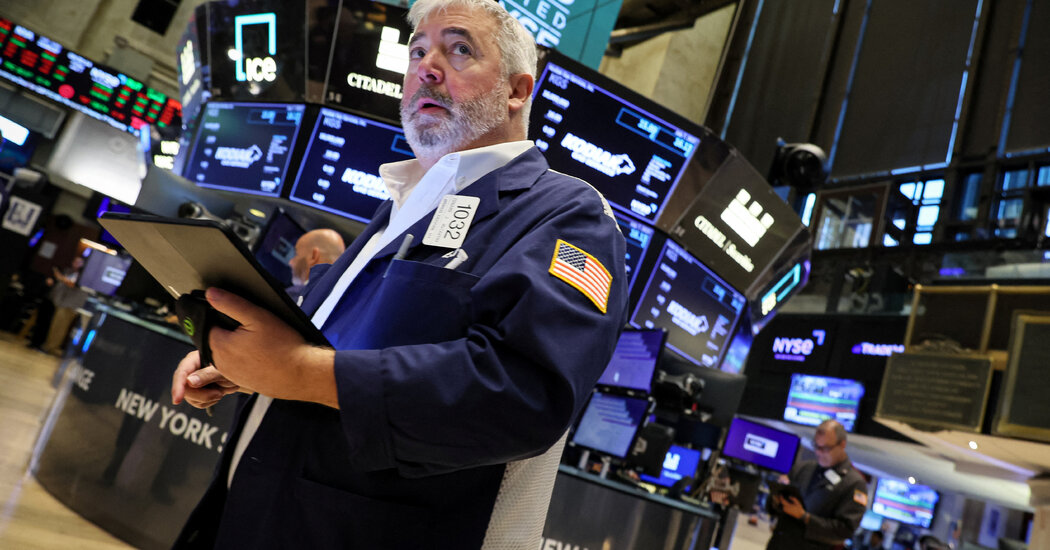Some investors believe that a recession warning that flashed on Wall Street over the past year may be sending a false signal — thinking instead that the Federal Reserve will be able to tame inflation and still escape a deep downturn.
That signal, called the yield curve, continued to reverberate through 2023 and is now issuing the strongest warning of a coming recession since the early 1980s. But even as the alarm bells have gotten louder, the stock market has bounced back and the economy has remained resilient, prompting some analysts and investors to rethink its predictive power.
On Wednesday, the consumer price index report showed a sharp drop in inflation last month, further fueling investor optimism and pushing stocks higher.
The yield curve charts the interest rate difference on government bonds with different maturities. Typically, investors expect to receive more interest for loans over longer periods, so those rates are generally higher than for shorter-term bonds, creating an upward curve. Over the past year, the curve has reversed, with yields on short-term debt rising higher than yields on longer-term bonds.
The inversion suggests that investors expect interest rates to fall from their current highs. And that usually only happens if the economy needs to be supported and the Fed responds by cutting interest rates.
The US economy is slowing but remains firmly on its feet, even after a sharp rise in interest rates.
“This time around, I tend to de-emphasize the yield curve,” said Subadra Rajappa, an interest rate analyst at Société Générale.
A common measure of the yield curve is fluctuating this year from levels last reached 40 years ago, with the yield on two-year debt being about 0.9 percentage point higher than the yield on 10-year bonds.
The last time the yield curve was inverted like this was in the early 1980s, when the Fed was struggling with runaway inflation, resulting in a recession.
The exact time between a yield curve inversion and a recession is difficult to predict and varies considerably. Yet it has been a reliable indicator for five decades. Arturo Estrella, an early proponent of the yield curve as a forecasting tool, said inflation tends to fall after a recession has already begun, but the rapid pace of rate hikes over the past year may have disrupted normal order.
“But I still think the recession will come,” he said this week.
Others say history may not repeat itself this time, as current conditions are peculiar: the economy is recovering from a pandemic, unemployment is low, and businesses and consumers are generally well off.
“The situation we are in is very different from normal,” said Bryce Doty, senior portfolio manager at Sit Investment Associates. “I don’t think it portends a recession. It is a relief that inflation is falling.”

